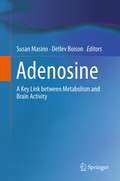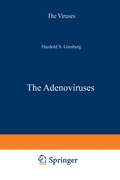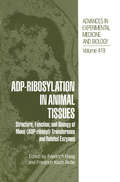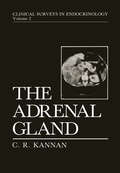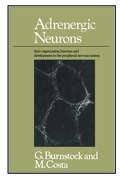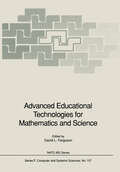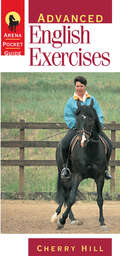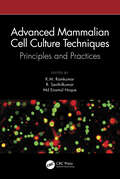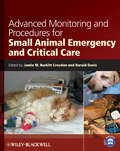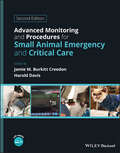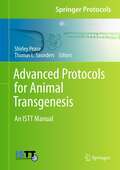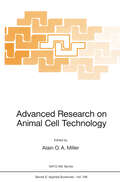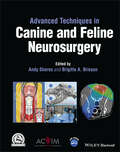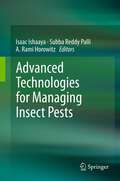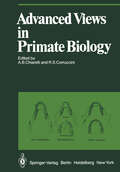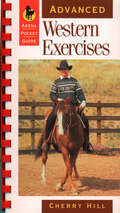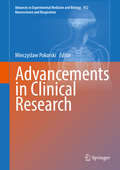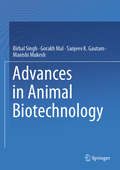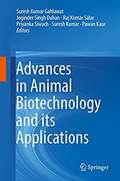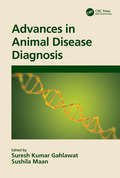- Table View
- List View
Adenosine: A Key Link between Metabolism and Brain Activity
by Susan Masino and Detlev BoisonHomeostasis of key metabolites and metabolic health affects all bodily systems. Not surprisingly, altered metabolic function is associated with a wide spectrum of dysfunctions in the central nervous system – including developmental disorders, acute nervous system injury, and neurodegenerative disorders. Accordingly, metabolism-based therapies offer significant promise as new category of treatment options designed to limit, delay or reverse the disease process by reconstructing homeostatic functions. Increasingly it is appreciated that restoring metabolic health could promote normal nervous system activity, and improve behavior and cognition. Adenosine: A Key Link Between Metabolism and Central Nervous System Activity focusses on diverse aspects of adenosine, an evolutionarily conserved homeostatic bioenergetic regulator in the central nervous system. Because of its interrelationship with ATP (adenosine triphosphate), adenosine is integral to cell metabolism. At the same time, adenosine influences neuronal activity directly via receptors, and is involved in biochemical processes related to gene expression. Thus, adenosine is uniquely placed as a reciprocal and rapid link between changes in metabolism and changes in neuronal activity, and, on a longer time scale, to changes in gene expression and long term changes in cell function. Leaders in the field feature basic research on adenosine at the cellular level in the central nervous system, and relate these findings to its recognized potential in diverse acute and chronic disorders. This comprehensive overview of adenosine also highlights emerging adenosine-based treatments and associated opportunities for central nervous system disorders.
The Adenoviruses (The Viruses)
by Harold S. GinsbergThe discovery of adenoviruses naturally induced a new interest in viruses of the human upper respiratory tract since previously unknown viruses infecting this portion of the human body had not been identified in 20 years, and their unique characteristics stimulated investigations into the biochemical events essential for replication of animal viruses. Indeed, the field of molecular virology has evolved during the period since their dis covery, and adenoviruses have played a major role in this development. The exciting discoveries made with adenoviruses have had such a pro found effect on knowledge in basic virology, molecular biology, viral ge netics, human and animal infections, and cell transformation that this seemed a propitious time to have some of the major contributors review this field. This volume pays tribute to the late Wallace Rowe, Robert Huebner, and Maurice Hilleman whose initial discoveries of adenoviruses have tremendously enriched virology. Harold S. Ginsberg vii Contents Chapter 1 An Overview 1 Harold S. Ginsberg Chapter 2 The Architecture of Adenoviruses M. V. Nermut I. Introduction ................................... . 5 II. Chemical and Physical Properties ................... . 6 III. Virus Capsid: Composition and Organization .......... . 7 A. Hexon ..................................... . 10 B. Penton .................................... . 12 C. Other Virus Polypeptides Associated with the Capsid 13 D. Organization of the Capsid ..................... . 14 IV. Virus Core .................................... . 15 A. Evidence for the Core Shell ..................... . 17 B. Organization of the DNA-Protein Complex (Nucleoc- sid) ....................................... . 18 C. Tentative Model of the Adenovirus Nucleocapsid ... . 22 V. Model of the Adenovirion ......................... . 29 32 References .......................................... .
ADP-Ribosylation in Animal Tissues: Structure, Function, and Biology of Mono (ADP-ribosyl) Transferases and Related Enzymes (Advances in Experimental Medicine and Biology #419)
by Friedrich Haag Friedrich Koch-NolteProceedings of an international workshop held in Hamburg, Germany, May 19-23, 1996
The Adrenal Gland (Clinical Surveys in Endocrinology #2)
by C.R. KannanThis volume, The Adrenal Gland, is the second in the Clinical Surveys in Endo crinology series. Like its predecessor on the pituitary gland, this work is written with one purpose in mind-to view the vast, relevant adrenal literature through a clinician's eyes. The intricate, and often complex, interrelationship between the clinical and research perspectives of "adrenology" poses a challenge. This is, in part, due to the commonly held belief that the milieux of steroid hormone research and clinical medicine are parallel phenomena, not destined to meet. But the twain do meet, and often with relative ease, when viewed as twin facets of the same gem. The view presented in this work is from the vantage point of the clinical endocrinologist who applies the research literature to understand adre nal diseases more clearly. Adrenal pathology is arguably the most fascinating of all endocrinopathies. The images of patients suffering from adrenal diseases are of kaleidoscopic quality: the newborn child with ambiguous genitalia, in whom the very first ritual of assigning sex becomes shrouded with uncertainty; the revitalized pa tient with hitherto undiagnosed Addison's disease, who but for the cognitive powers of the endocrinologist would have ultimately succumbed, undiagnosed; the virilized female with adrenal tumor and its attendant onslaught on the body and mind; the febrile patient with pheochromocytoma masquerading as fever of undetermined origin for months.
Adrenergic Neurons: Their Organization, Function and Development in the Peripheral Nervous System
by Geoffrey Burnstock CostaAdvanced Ecological Theory: Principles and Applications
by J. McGladeAdvanced Ecological Theory is intended for both postgraduate students and professional researchers in ecology. It provides an overview of current advances in the field as well as closely related areas in evolution, ecological economics, and natural-resource management, familiarizing the reader with the mathematical, computational and statistical approaches used in these different areas. The book has an exciting set of diverse contributions written by leading authorities.
Advanced Educational Technologies for Mathematics and Science (NATO ASI Subseries F: #107)
by David L. FergusonThis book is the outgrowth of a NATO Advanced Research Workshop, held in Milton Keynes (United Kingdom) in the summer of 1990. The workshop brought together about 30 world leaders in the use of advanced technologies in the teaching of mathematics and science. Many of these participants commented that the workshop was one of the more productive and exciting workshops that they had attended. It was not uncommon to see participants engaged in informal discussion far into the evenings and early mornings, long after formal sessions had ended. It is my hope that this book captures the substance and excitement of many of the ideas that were presented at the workshop. Indeed, the process by which this book has come about has given every opportunity for the best thinking to get reflected here. Participants wrote papers prior to the workshop. After the workshop, participants revised the papers at least once. In a few instances, three versions of papers were written. Some participants could not resist the urge to incorporate descriptions of some of the newer developments in their projects. The papers in this book demonstrate how technology is impacting our view of what should be taught, what can be taught, and how we should go about teaching in the various disciplines. As such, they offer great insight into the central issues of teaching and learning in a wide range of disciplines and across many grade levels (ranging from elementary school through undergraduate college education).
Advanced English Exercises
by Cherry HillWith this pocket-sized guide in hand, you'll find it easy to develop and perfect your English riding skills. Cherry Hill's exercises will help you hone lateral work, master collection, perfect lead changes, and fine-tune transitions and change of direction.
Advanced Mammalian Cell Culture Techniques: Principles and Practices
by K. M. Ramkumar R. Senthilkumar Md Enamul HoqueThis up-to-date book compiles both basic and advanced laboratory techniques of mammalian cell culture. It is divided into four major sections encompassing the basics of cell culture, nucleic acid and protein isolation, cell-staining techniques, and cell transfection and single-cell analysis. The topics include aseptic handling, media preparation, and passaging of cells. The book also outlines downstream assays such as nucleic acid and protein isolation from in-vitro cell cultures. Key Features: • Covers cellular staining using fluorescent dyes, genetic manipulation of cells via transfection, and an introduction to single-cell analyses • Discusses basics in cell culture and downstream applications including gene and protein expression analysis • Includes the principles underlying each of the techniques and provides a detailed methodology to practice • Explores the whole range of techniques – from basic to downstream applications and advanced methods The book is essential for students and researchers in the field of life sciences, biotechnology, genetics, and molecular biology.
Advanced Mammalian Cell Culture Techniques: Principles and Practices
This up-to-date book compiles both basic and advanced laboratory techniques of mammalian cell culture. It is divided into four major sections encompassing the basics of cell culture, nucleic acid and protein isolation, cell-staining techniques, and cell transfection and single-cell analysis. The topics include aseptic handling, media preparation, and passaging of cells. The book also outlines downstream assays such as nucleic acid and protein isolation from in-vitro cell cultures. Key Features: • Covers cellular staining using fluorescent dyes, genetic manipulation of cells via transfection, and an introduction to single-cell analyses • Discusses basics in cell culture and downstream applications including gene and protein expression analysis • Includes the principles underlying each of the techniques and provides a detailed methodology to practice • Explores the whole range of techniques – from basic to downstream applications and advanced methods The book is essential for students and researchers in the field of life sciences, biotechnology, genetics, and molecular biology.
Advanced Monitoring and Procedures for Small Animal Emergency and Critical Care
by Jamie M. Burkitt Creedon Harold DavisAdvanced Monitoring and Procedures for Small Animal Emergency and Critical Care is a comprehensive yet practical reference, providing hands-on information essential to veterinarians and veterinary technicians involved in emergency and critical care. Written by an expert team of veterinarians and veterinary technicians, this well-referenced book offers step-by-step protocols for performing advanced emergency and critical care procedures and monitoring techniques. Packed with practical guidance in an easy-to-use format, this book is ideally suited for quick access in emergency rooms or intensive care units. Organized primarily by body system, each chapter covers general principles, indications, equipment, techniques, basic interpretation, troubleshooting, and contraindications. Standardized protocols supply equipment lists and step-by-step instructions throughout, and a companion website offers images from the book in PowerPoint and protocols as downloadable Word files. Advanced Monitoring and Procedures for Small Animal Emergency and Critical Care is a valuable resource for any veterinary staff member with an interest in improving the standard of care in emergency and critical care medicine.
Advanced Monitoring and Procedures for Small Animal Emergency and Critical Care
by Jamie M. Burkitt Creedon Harold DavisAdvanced Monitoring and Procedures for Small Animal Emergency and Critical Care is a comprehensive yet practical reference, providing hands-on information essential to veterinarians and veterinary technicians involved in emergency and critical care. Written by an expert team of veterinarians and veterinary technicians, this well-referenced book offers step-by-step protocols for performing advanced emergency and critical care procedures and monitoring techniques. Packed with practical guidance in an easy-to-use format, this book is ideally suited for quick access in emergency rooms or intensive care units. Organized primarily by body system, each chapter covers general principles, indications, equipment, techniques, basic interpretation, troubleshooting, and contraindications. Standardized protocols supply equipment lists and step-by-step instructions throughout, and a companion website offers images from the book in PowerPoint and protocols as downloadable Word files. Advanced Monitoring and Procedures for Small Animal Emergency and Critical Care is a valuable resource for any veterinary staff member with an interest in improving the standard of care in emergency and critical care medicine.
Advanced Monitoring and Procedures for Small Animal Emergency and Critical Care
by Jamie M. Burkitt Creedon Harold DavisAdvanced Monitoring and Procedures for Small Animal Emergency and Critical Care Detailed, standardized, step-by-step protocols for easy access to essential information in small animal emergency rooms and intensive care units Advanced Monitoring and Procedures for Small Animal Emergency and Critical Care, Second Edition offers a complete and clinically oriented reference for step-by-step detail on a wide range of procedures in the small animal emergency room and intensive care unit. Each protocol provides detailed instructions grounded in the evidence. The book is carefully designed for ease of use, with concise but comprehensive explanations, useful equipment lists, protocols called out in boxes, and extensive reference lists. In the revised and expanded Second Edition, information has been updated and expanded throughout, and information and chapters have been added in many important areas, including veterinary point-of-care ultrasound (VPOCUS), veterinary CPR, blood banking and transfusion medicine, advanced techniques for mechanical ventilation, and veterinary health care team wellbeing. A companion website offers the protocols in Word for editing and use in practice and the figures from the book in PowerPoint. Specific topics covered in Advanced Monitoring and Procedures for Small Animal Emergency and Critical Care include: The cardiovascular system, covering catheterization of the venous compartment, arterial puncture and catheterization, cardiac VPOCUS, principles of electrocardiography, and electrocardiogram interpretation The respiratory system, covering oxygen therapy, pulse oximetry and CO-oximetry, blood gas analysis, pleural space and lung VPOCUS, tracheal intubation, and temporary tracheostomy The urinary and abdominal systems, covering urethral catheterization, abdominal VPOCUS, peritoneal dialysis, technical management of hemodialysis patients, and peritoneal evaluation Transfusion medicine, covering blood banking, blood typing, cross-matching, and administration of blood and other biological products Advanced Monitoring and Procedures for Small Animal Emergency and Critical Care presents invaluable and accessible information for emergency situations, making it a highly useful reference for veterinary practitioners, veterinary technicians and nurses, veterinary students, small animal emergency and critical care residents, small animal emergency and critical care specialists, and emergency and critical care veterinary technicians and nurse specialists.
Advanced Monitoring and Procedures for Small Animal Emergency and Critical Care
by Jamie M. Burkitt Creedon Harold DavisAdvanced Monitoring and Procedures for Small Animal Emergency and Critical Care Detailed, standardized, step-by-step protocols for easy access to essential information in small animal emergency rooms and intensive care units Advanced Monitoring and Procedures for Small Animal Emergency and Critical Care, Second Edition offers a complete and clinically oriented reference for step-by-step detail on a wide range of procedures in the small animal emergency room and intensive care unit. Each protocol provides detailed instructions grounded in the evidence. The book is carefully designed for ease of use, with concise but comprehensive explanations, useful equipment lists, protocols called out in boxes, and extensive reference lists. In the revised and expanded Second Edition, information has been updated and expanded throughout, and information and chapters have been added in many important areas, including veterinary point-of-care ultrasound (VPOCUS), veterinary CPR, blood banking and transfusion medicine, advanced techniques for mechanical ventilation, and veterinary health care team wellbeing. A companion website offers the protocols in Word for editing and use in practice and the figures from the book in PowerPoint. Specific topics covered in Advanced Monitoring and Procedures for Small Animal Emergency and Critical Care include: The cardiovascular system, covering catheterization of the venous compartment, arterial puncture and catheterization, cardiac VPOCUS, principles of electrocardiography, and electrocardiogram interpretation The respiratory system, covering oxygen therapy, pulse oximetry and CO-oximetry, blood gas analysis, pleural space and lung VPOCUS, tracheal intubation, and temporary tracheostomy The urinary and abdominal systems, covering urethral catheterization, abdominal VPOCUS, peritoneal dialysis, technical management of hemodialysis patients, and peritoneal evaluation Transfusion medicine, covering blood banking, blood typing, cross-matching, and administration of blood and other biological products Advanced Monitoring and Procedures for Small Animal Emergency and Critical Care presents invaluable and accessible information for emergency situations, making it a highly useful reference for veterinary practitioners, veterinary technicians and nurses, veterinary students, small animal emergency and critical care residents, small animal emergency and critical care specialists, and emergency and critical care veterinary technicians and nurse specialists.
Advanced Protocols for Animal Transgenesis: An ISTT Manual (Springer Protocols Handbooks)
by Shirley Pease and Thomas L. SaundersThis laboratory manual, published in cooperation with the International Society for Transgenic Technology (ISTT), provides almost all current methods that can be applied to the creation and analysis of genetically modified animals. The chapters have been contributed by leading scientists who are actively using the technology in their laboratories. Based on their first-hand experience the authors also provide helpful notes and troubleshooting sections. Topics range from standard techniques, such as pronuclear microinjection of DNA, to more sophisticated and modern methods, such as the derivation and establishment of embryonic stem (ES) cell lines, with defined inhibitors in cell culture medium. In addition, related topics with relevance to the field are addressed, including global web-based resources, legal issues, colony management, shipment of mice and embryos, and the three R’s: refinement, reduction and replacement.
Advanced Research on Animal Cell Technology (NATO Science Series E: #156)
by Alain O. A. MillerProceedings of the NATO Advanced Research Workshop, Brussels, Belgium, September 21-24, 1987
Advanced Techniques in Canine and Feline Neurosurgery
by Andy ShoresAdvanced Techniques in Canine and Feline Neurosurgery An up-to-date discussion of the latest advanced neurosurgical techniques for dogs and cats In Advanced Techniques in Canine and Feline Neurosurgery, a team of distinguished veterinary practitioners delivers an authoritative and accessible compilation of current best practices for surgery of the spine, neck, and head in dogs and cats. The book focuses on advanced and cutting-edge techniques in the field, offering detailed and step-by-step descriptions of state-of-the-art procedures accompanied by video clips of most. The authors have developed a companion website that includes additional resources for the techniques described in the book, which provides coverage of percutaneous laser disk fenestration, spinal stabilization, and pituitary surgery. Each chapter presents a detailed description of an operative technique, indications, surgical anatomy, and related and detailed illustrations. Readers will also find: A thorough introduction to the history of veterinary neurosurgery and applications of 3D printing in veterinary neurosurgery In-depth treatments of post-operative radiation therapy of intracranial tumors Comprehensive discussions of the more routine spinal procedures, including cervical ventral slot decompression Explorations of intracranial procedures, including intraoperative ultrasound in intracranial surgery Perfect for veterinary surgeons and veterinary internal medicine specialists, Advanced Techniques in Canine and Feline Neurosurgery will also earn a place in the libraries of veterinary residents and interns.
Advanced Techniques in Canine and Feline Neurosurgery
by Andy Shores Brigitte A. BrissonAdvanced Techniques in Canine and Feline Neurosurgery An up-to-date discussion of the latest advanced neurosurgical techniques for dogs and cats In Advanced Techniques in Canine and Feline Neurosurgery, a team of distinguished veterinary practitioners delivers an authoritative and accessible compilation of current best practices for surgery of the spine, neck, and head in dogs and cats. The book focuses on advanced and cutting-edge techniques in the field, offering detailed and step-by-step descriptions of state-of-the-art procedures accompanied by video clips of most. The authors have developed a companion website that includes additional resources for the techniques described in the book, which provides coverage of percutaneous laser disk fenestration, spinal stabilization, and pituitary surgery. Each chapter presents a detailed description of an operative technique, indications, surgical anatomy, and related and detailed illustrations. Readers will also find: A thorough introduction to the history of veterinary neurosurgery and applications of 3D printing in veterinary neurosurgery In-depth treatments of post-operative radiation therapy of intracranial tumors Comprehensive discussions of the more routine spinal procedures, including cervical ventral slot decompression Explorations of intracranial procedures, including intraoperative ultrasound in intracranial surgery Perfect for veterinary surgeons and veterinary internal medicine specialists, Advanced Techniques in Canine and Feline Neurosurgery will also earn a place in the libraries of veterinary residents and interns.
Advanced Technologies for Managing Insect Pests
by Isaac Ishaaya, Subba Reddy Palli and A. Rami HorowitzAmong the highlights of this book is the use of novel insecticides acting on a specific site in an insect group and are compatible with natural enemies and the environment. One of such approaches is based on disrupting the activity of biochemical sites acting on transcription factors such as the Helix-Loop-Helix (bHLH) family, anti juvenile hormone (AJH) agents that target JH biosynthetic enzymes, G-protein coupled receptors (GPCR) and bursicon as a target for insect control. Another one is the biotechnology or the genetic approach such as gene silencing (RNA interference) and Bt-crops. Other sections of the book are devoted to the plant’s natural products, optical manipulation and the use of nanotechnology for improving insect control methods.
Advanced Views in Primate Biology: Main Lectures of the VIIIth Congress of the International Primatological Society, Florence, 7–12 July, 1980 (Proceedings in Life Sciences)
by A. B. Chiarelli R. S. CorrucciniAdvanced Western Exercises
by Cherry HillStrengthen your Western riding skills as you progress through a series of proven and effective exercises. Perfect for quick reference in the ring, this guide includes illustrated directions, an arena guide, and plenty of patterns to master. Focusing on essential riding fundamentals like lateral work, master collection, lead changes, and transitions, Cherry Hill offers plenty of encouraging expert advice for riders seeking to improve their horsemanship. Enjoy the rewarding satisfaction that comes with taking your riding to a new and exciting level.
Advancements in Clinical Research (Advances in Experimental Medicine and Biology #952)
by Mieczyslaw PokorskiThe book presents current progress in clinical practice and research, particularly involving pulmonary diseases. Chapters tackle a variety of topics including a search for potential biomarkers of lung tumors, sleep disordered breathing, neurogenic lung dysfunction, community acquired and nosocomial respiratory infections developing in the chronically ill, mechanisms of hypoxia sensing, and the reasons for frequent visits to primary care facilities causing an ever increasing costs for caregivers and society. Identifying molecular markers expressed in tumors, rather than histological stratification of cancer type, forms a rapidly evolving basis of precision medicine, with the hope of a future development of targeted treatment. Creative ideas drive basic research that spurs innovations that, in turn, when translated into clinical applications, lay the foundation of breakthroughs, hopefully leading to increased longevity and better quality of life. This book is intended for healthcare professionals, particularly pulmonologists, primary care physicians, and other specialists involved in the management of patients.
Advances in Animal Biotechnology
by Birbal Singh Gorakh Mal Sanjeev K. Gautam Manishi MukeshThis book entitled, “Advances in Animal Biotechnology,” is a compilation of state-of-the-art in the field of Animal Biotechnology including fishery, that are not sheltered in depth in earlier publications. It offers an update on avant-garde technologies and advances in key aspects of genetic engineering, metagenomics, assisted reproduction, animal genomics, biotechnology in veterinary health, as well as the role of gut and marine microbial ecosystems in livestock and industrial development. The book is divided broadly into five different sections, viz., Gut Microbiome and Nutritional Biotechnology, Assisted Reproduction Biotechnology, Livestock Genomics, Health Biotechnology, and Animal Biotechnology in Global Perspective. The book covers the syllabi of Animal Biotechnology courses in various universities, academia and competitive examinations at various levels. Researchers, Continuing Graduates, and Academicians, Research Institutions, and Biotech Companies will be benefited from this valuable compilation of research. Its broad spectrum makes this work a valuable resource for professionals, researchers, academics and students in the field of veterinary and animal production as well as the biotechnology industry.
Advances in Animal Biotechnology and its Applications
by Suresh Kumar Gahlawat Joginder Singh Duhan Raj Kumar Salar Priyanka Siwach Pawan KaurThis book explores the recent advancements in cutting-edge techniques and applications of Biotechnology. It provides an overview of prospects and applications while emphasizing modern, and emerging areas of Biotechnology. The chapters are dedicated to various field of Biotechnology including, genome editing, probiotics, in-silico drug designing, nanoparticles and its applications, molecular diagnostics, tissue engineering, cryopreservation, and antioxidants. It is useful for both academicians and researchers in the various disciplines of life sciences, agricultural sciences, medicine, and Biotechnology in Universities, Research Institutions, and Biotech companies. This book provides the readers with a comprehensive knowledge of topics in Genomics, Bionanotechnology, Drug Designing, Diagnostics, Therapeutics, Food and Environmental Biotechnology. The chapters have been written with special reference to the latest developments in the frontier areas of Biotechnology that impacts the Biotech industries.
Advances in Animal Disease Diagnosis
by Suresh Kumar GahlawatAdvances in Animal Disease Diagnosis: Infectious animal diseases caused by pathogenic microorganisms such as bacteria, fungi, and viruses threaten the health and well-being of wildlife, livestock and human populations, limit productivity and significantly increase economic losses to each sector. Pathogen de-tection is an important step for the diagnosis and successful treatment of animal diseases as well as control management in farm and field conditions. The conventional techniques employed to diagnose pathogens in livestock species are time-consuming and sometimes give inconclusive results. On the contrary, molecular techniques have the potential to diag-nose known pathogens/conditions quickly, reliably, and unequivocally as well as for novel pathogen detection. New advances in diagnostics and vaccine design using genomics have developed powerful new methods that have also set the stage for the enhanced diagnosis, surveillance, and control of infectious diseases. High-throughput sequencing (HTS), for ex-ample, uses the latest DNA sequencing platforms in the detection, identification, and detailed analysis of both pathogen and host genomes. This book will explore some key opportunities in the context of animal health, such as the detection of new microorganisms and the development of improved diagnosis of emerging or re-emerging diseases and other clinical conditions, viz. biosensors, nanotools, and omics technologies. Features • Details comprehensive knowledge on the latest molecular techniques for animal disease diagnosis and management• Examines how DNA-based diagnostic techniques will assist international efforts to control the introduction of exotic diseases into new geographic areas• Describes the latest molecular assays for the rapid and accurate detection of pathogens• Helps in working towards meeting the global challenge for sustainable food production and the eradication of poverty• With new biotechnological developments, this fully updated book is a treasure trove of the latest information in animal and medical science
